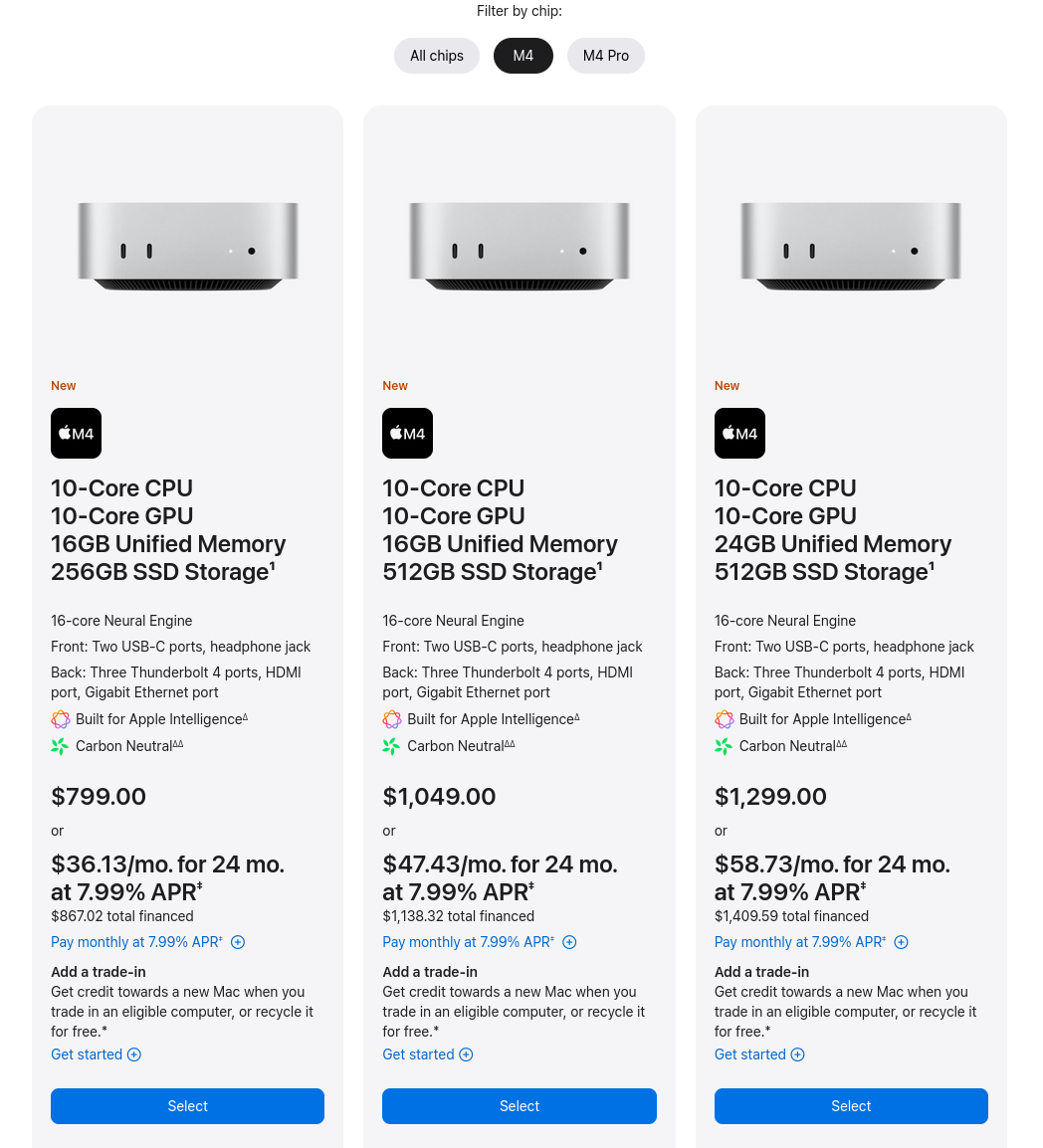Leaflet
- 145 Posts
- 151 Comments

 2·2 days ago
2·2 days agoPreferably the drivers and quirks of the hardware would all be patched upstream so that you don’t need to use a distro with the fixes patched in.

 231·4 days ago
231·4 days agoMac Mini doesn’t come with a keyboard. So unless you’ve owned an iMac or bought a keyboard separately, you won’t have that convenience.
That being said, I haven’t touched the power button on my Mac Mini since I got mine on the 8th.

 5·6 days ago
5·6 days agoA good place to start is the “Water Cooler” section of the Fedora Discourse: https://discussion.fedoraproject.org/c/fun/8

 5·6 days ago
5·6 days agoI think a dev for Factorio discussed this issue on Brodie Robertson’s podcast.

 4·7 days ago
4·7 days agoBrand new Mac Mini, just came out today. It has a full year of warranty left.

 5·7 days ago
5·7 days agoMy HDMI tops out at 144hz, issue still present.

 3·7 days ago
3·7 days ago1440p at 170Hz with the DisplayPort. But I also tried going down to 60hz, but in that brief time I did that, that made the flickering issue even more apparent.
I hear that Gnome can struggle on touchscreens due to some GTK bugginess.
Plasma is probably a good bet since it has a dedicated touch friendly mode and is tested on the Steam Deck, which has a touch screen.
There’s third party Appimages. They also had a blog post discussing using Appimages for testing builds. If that gets done, I don’t see why they wouldn’t offer an official build.

 9·13 days ago
9·13 days agoI believe it’s an Apple Silicon limitation in their lower end chips.

 161·14 days ago
161·14 days agoOn iOS, I feel like doing things take a few extra taps and swipes than they would on Android.
But on the whole apps made for iOS feel higher quality. Even Google’s own apps are better on iOS. I feel like the problem is that Apple forces developers to adopt changes quickly, whereas Google lets apps use years old API versions.

 2·14 days ago
2·14 days agoFunny, FSR2 helps me a lot but FSR3’s frame generation does nothing for me.

 62·15 days ago
62·15 days agoMakes sense that it includes snap given that KDE officially supports their apps packaged as snaps, unlike Gnome.
If I recall correctly, aren’t they going for an Arch base? I assume they’re going to be enabling AppArmor so that the snap sandboxing is mostly working, except for the patches Canonical have failed to upstream so far.

 31·17 days ago
31·17 days agoI’m tempted by this too (or maybe the upcoming MacBook Air). I’m just worried that I’m not going to like MacOS. I’m pretty happy with Linux, like FOSS, but Apple just has the best hardware at the moment.

 1·18 days ago
1·18 days agoNope, both on the same Wifi network. Can’t think of why it would be showing differently. Not even force refreshing the page did anything. But I just checked again and now it’s showing the right prices.

 1·18 days ago
1·18 days agoHuh

It shows up as $599 on my iPhone, but not desktop.

 1·18 days ago
1·18 days agoLowest I’m seeing from the preorder screen is $799.

 24·18 days ago
24·18 days ago$200 base price increase, ouch.
Edit: apparently it starts at $599, but for some reason Apple is showing me $799 for the base model.

 4·19 days ago
4·19 days agoFair enough. It certainly benefits Apple if people with full photo libraries instead move those to iCloud with costly subscriptions.
Fedora Silverblue